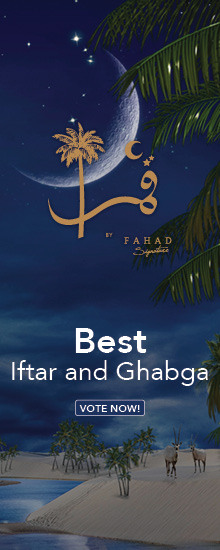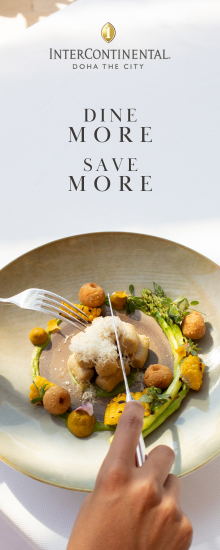RAMADAN AROUND THE WORLD
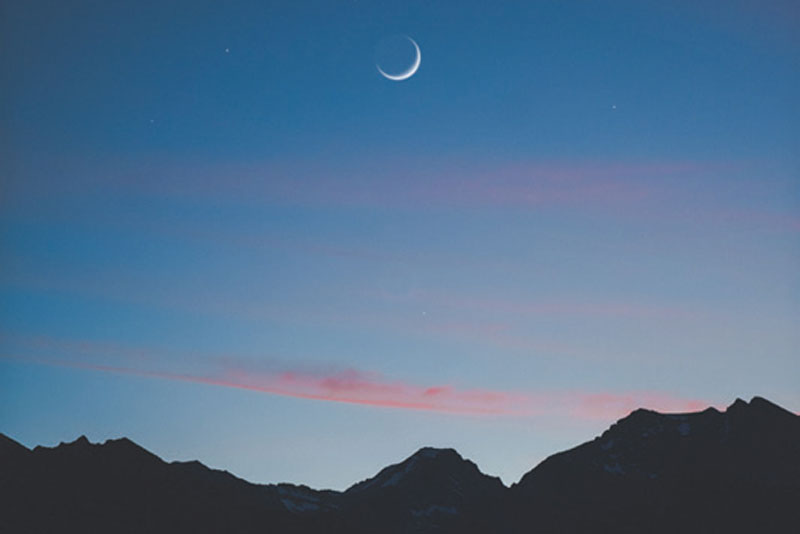
This month we begin the first days of Ramadan. A time for spiritual awakenings and reflection; Ramadan brings the Islamic world together under an umbrella of self-restraint, contentedness, perseverance, and togetherness. And, even though the world may not be able to celebrate this month in all its spiritual communal glory, we’ve rounded up some beautiful traditions from across the globe that make Ramadan, well, Ramadan. With Islam being a widespread and ancient religion, each country has intertwined its traditions and customs to make the month its own. It’s important to note that not all celebrations listed will be taking place as usual due to the pandemic, but it’s still beautiful to see how the world celebrates this month together.
Garangao
This is undoubtedly the most joyous Ramadan tradition we’ve come across, full of smiling children, melodic songs, and sweets. Now before we dive deeper into this tradition in Qatar, it’s vital to know that there are other variants throughout the Gulf countries known through different names; Garangao in Qatar and Bahrain, Karkee’aan in Saudi Arabia, Gargee’aan in Kuwait, AlMajeena Karkiaan in Iraq, Garangashoch, At-Tablah or Qarnakosh in Oman, and Hag Al Leylah in UAE. In Qatar it is said to be rooted in the pearl-diving tradition of the Gulf state, however, the details are not confirmed. Garangao is celebrated after the breaking of the fast on the 14th night of Ramadan.
The name of the tradition comes from the Khaleeji word ‘gara’, which refers to the sound of things knocking together. It’s a cheerful tradition to reward Muslim children for fasting halfway through the Holy Month. During this activity, children dress up in their traditional clothes, carry decorated bags and walk around their neighbourhoods singing the Garangao song, in hopes of some neighbourly treats. The girls wear rich, colourful, embroidered jalabiyas and gold jewellery, while the boys are adorned in traditional Qatari thobes, jackets, and caps. Historically, children were given dates, rice and wheat, the typical ingredients used for a classical Qatari dish called Harees. But now they’re awarded sweets and nuts (not dissimilar to Halloween in that respect).

“It was the reward for the little fasting we did during the month, even if we didn’t understand much of what was going on, we knew exactly what was happening when Garangao came around,” says Noor Jassmi, a Qatari local. “I remember wearing my traditional jalabiya and wanting to always top up my look from last year, sharing candy with cousins. It’s definitely one of my fondest memories growing up.” During this time of the month, markets like Souq Waqif in Qatar are bursting with gift packages for Garangao, comprising of nuts, chocolates, and candies. Children sing the traditional song of ‘Garangao Garangao yatona atawna Allah Yatimkuk, Bait Makka Yuwaddikum (Give us, Allah will give you and send you to Masjid Al Haram in Makkah Al Mukarramah) while visiting their neighbours’ houses for gifts. A song embedded deep in the GCC history.
This festival also brings echoing memories of Qatari culture and heritage which is narrated by forefathers to their children and grandchildren on the occasion. The whole country takes part in this celebration. Malls organise music and treats, as do residential and sports complexes, and schools. Along with sweet and nut distribution, the celebrations also include henna applications, puppet shows, face-painting, listening to, and narrating stories! It’s the time of year every child on the block looks forward to. Over the years, the festival has gained even more recognition with several expatriates also joining in on the celebrations as even non-Muslims begin to celebrate the culture and traditions.
Chaand Raat
The last night of Ramadan is always cause for celebration and, as the first day of the month of Shawwal (the month after Ramadan), on the sighting of the first lunar crescent, Ramadan can either be 29 or 30 days. Making the actual day for Eid a mystery until the night before, creates an uproar of excitement and enthusiasm around the Muslim world.
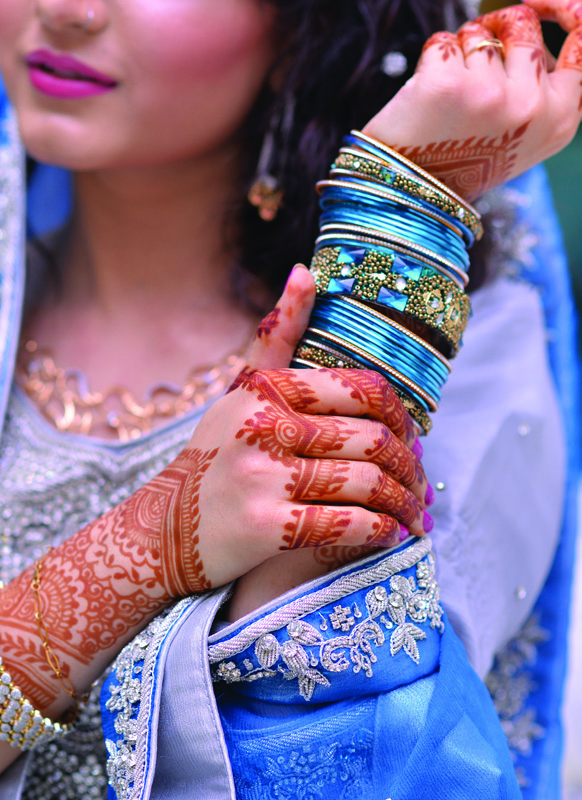
Some might say, it brings more excitement than Eid-al-Fitr itself, as the streets of Pakistan, Bangladesh, and India come alive with festivity. As soon as the moon for Eid is sighted, the women of South Asia rush to the markets for Chaand Raat. Chaand means moon, and Raat translates to night, so the name literally means the ‘night of the moon’. After the final iftar of Ramadan is completed and the moon for the commencement of Eid is sighted, droves of women and girls flock to the local bazaars to celebrate this auspicious night. In light of this tradition of Chaand Raat, most shopkeepers remain open late into the night, catering to the influx of lastminute shoppers.
Now, the big malls and shopping centres also indulge in this tradition, but the true fun lies within the old alleys and streets of the cities. Some of the most important and vital shops being those selling bangles and henna. These bazaars are instantly adorned with makeshift stalls dripping with bangles of all designs, sizes, and colours along the sides of narrow streets. Women gather around these stands and try on various assortments for the next day. You can easily lose your voice amongst the laughter and bargaining that occurs. The henna stands also attract large queues of women and children alike. Intricate and elaborate designs are created on hands, feet and arms, instilling even more excitement for the next day. The henna application remains a time-honoured Ramadan tradition in South Asian countries such as India, Pakistan, and Bangladesh to date.
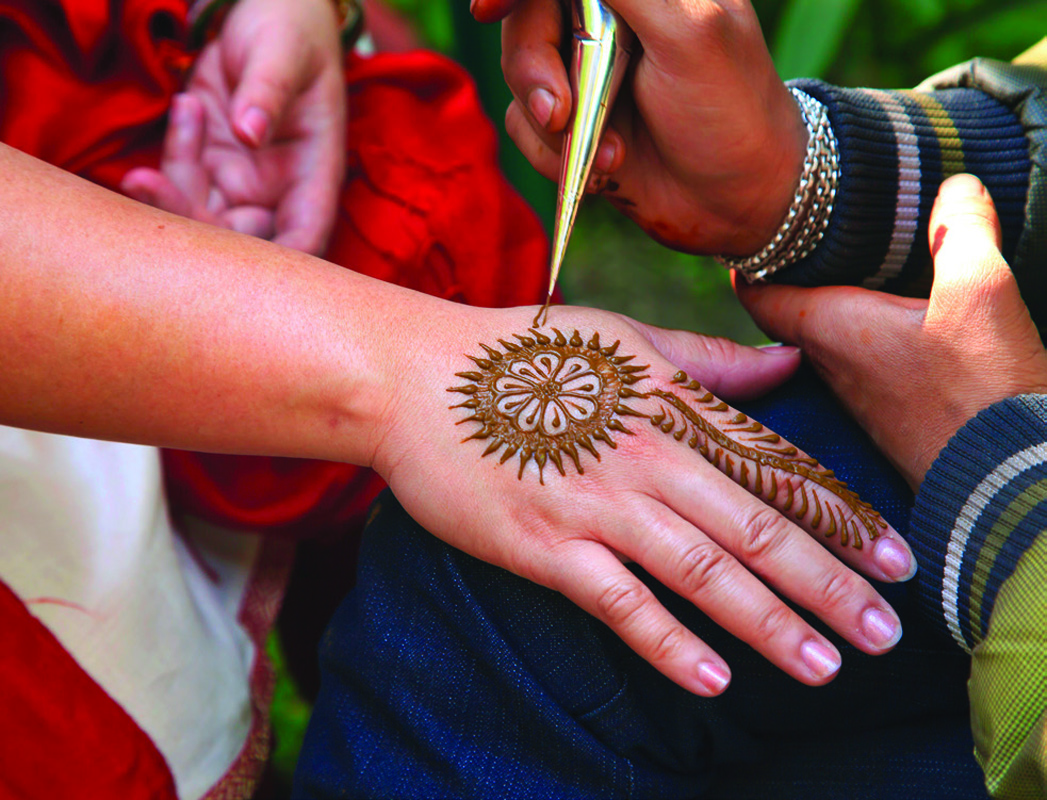
The local bazaars are sparkling with the excitement for Eid, whilst uplifting the community spirit. Speaking with Mashaal Gohar, a local from Lahore, Pakistan, she recounts this as being her favourite time of the year. “There is so much life and commotion on the streets that it just instils the spirit of the occasion within you. My family and I go every year to this little local alley, that only allows one-way traffic, and we stand on the edges waiting in line for henna.” And while the tradition originated in the subcontinent, the most well-known Chaand Raat festivities also take place oceans away.
The subcontinent’s population living in countries such as the USA and Australia have taken this tradition overseas, and share it with their local communities, setting up fairs and festivals to commemorate the occasion. “Chaand Raat is one of the few occasions where all the desi community comes together for a night of food and fun. It’s also a great way to show my kids our traditions while living in America,” says Sugam Riaz, a mother of two living in Virginia, USA.
Fanous
Ramadan is all about starry nights and the crescent moon, and Egypt takes the concept of lighting up the night sky a step further. The country’s people gather together to welcome the Holy Month with colourful fanous — intricate lanterns that symbolise unity and joy throughout.
This tradition, although more cultural than religious, is truly the most captivating sight in the country during this month and has become deeply intertwined with Ramadan activities as it also takes on a spiritual significance. There are many stories and much ancient folklore about the origins of the lanterns and the beginning of their use, but a prominent account dates the birth of the fanous to one night during the Fatimid dynasty. The story highlights when locals gathered to greet the Caliphate Al-Mu‘izz li-Din Allah as he arrived in Cairo on the first day of Ramadan.
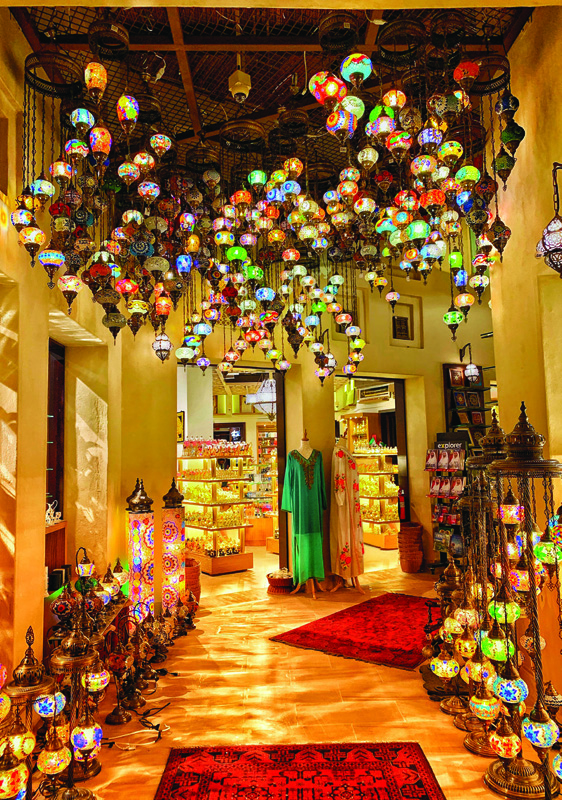
It is said that military officials held candles in dark streets, sheltered with wooden frames against the wind, to create a lit-up pathway. They are also said to have been used as a means of illumination especially when going to mosques at night. Over time these wooden figures have been elevated to become a chaotic array of colours, now displayed across the entire country, spreading light during the Holy Month. “I remember going to the markets with my mum just before Ramadan.
The streets would be flooded with lanterns of all colours and sizes and this little trip became our yearly tradition. It’s a way for parents to get their kids excited about Ramadan, and when we were buying things to prepare for the month, buying a fanous was number one priority,” says Nadine Abulnasr, an Egyptian national, as she narrates her experience in Egypt as a child. “All the kids in my family would have their own lanterns that we would light up throughout the month,” she adds. Buying Ramadan lanterns is a source of joy for children and adults alike; the large lanterns are hung throughout the city; in the streets decorating cafes, storefronts, and homes.
These lanterns are dangled from windows and balconies, on ropes across alleyways, emitting a magical atmosphere as the city glows in a beautiful sea of light and colours. It’s nearly impossible to find a street devoid of this magic during Ramadan. One of the most joyful traditions, that we see less of now, was children swinging their lanterns as they walked down crowded streets, going from door to door singing ‘wahawi ya wahawi’ while asking for gifts and candy.

Even though this tradition has nearly disappeared, the magic of the lantern remains. This intricate custom has thoroughly spread throughout the Arab countries, with no intrinsic link to religion. The fanous, has become a universal symbol for Ramadan with its intricate designs, and dancing rays of colourful lights. “It doesn’t feel like Ramadan without them,” adds Nadine.
Drumming at Dawn
The thudding sounds of drumbeats can be heard loud and clear in Ramadan on the streets of Turkey. Ever since the days of the Ottoman Empire, those fasting during Ramadan have woken up to the sound of a drum beating early in the morning for suhoor, and that tradition has been kept alive and pounding to this day.
Despite technology gracing us with alarm clocks in our phones, more than 2,000 drummers still roam the streets of many areas in Turkey, awakening the community to take suhoor before commencing their fast for the day. These drummers dress in traditional Ottoman attire, including a fez and vest adorned with traditional motifs, paying homage to their lineage and culture.
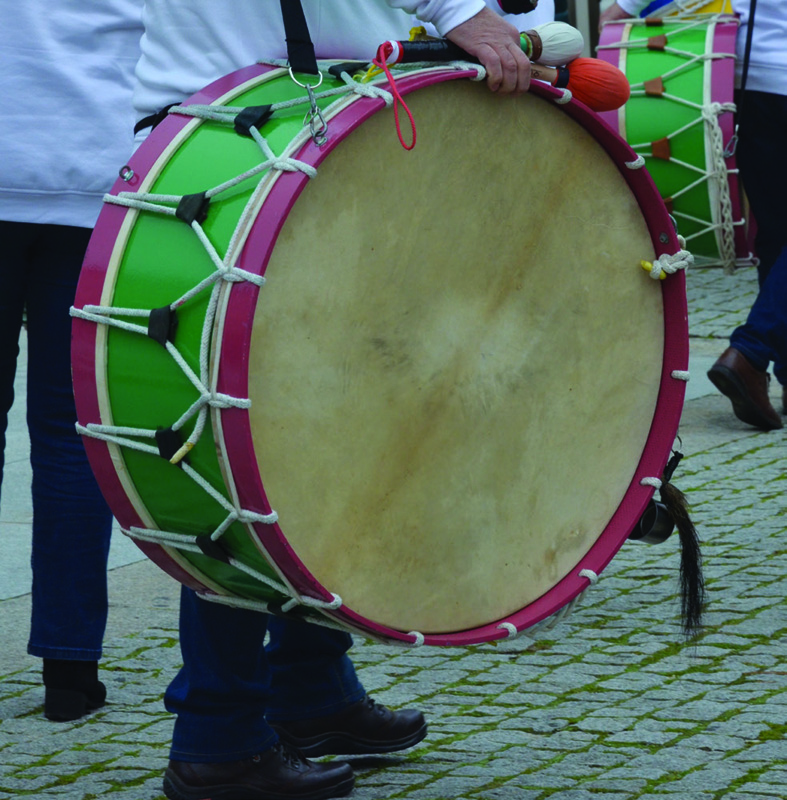
The morning risers make their rounds on the streets with their double-headed drums known as davul, beating in unison, and sometimes vocalising a song or poem. “This drumming tradition has been an integral part of our Ramadan experiences back in Turkey,” says Ece Omayma Yigit, “It’s like a communal alarm, that gives us a magical sense of togetherness, knowing that all our neighbours in the community are partaking in the same religious customs as we are.” There are also tales and accounts of these drummers relying on the kindness and generosity of the street residents to give them tips (bahşiş) or even invite them in to share their suhoor meal.
These acts strengthen communities to this day, as they embark on this centuries-old tradition. And to keep this tradition alive, the Turkish government has also implemented a membership card for drummers in order to instil a sense of tradition in those who play and encourage the younger generation to take part. This has restored a sense of pride to the age-old custom and helped expand the network of drummers.

This drumming is also found in some Gulf countries and South Asia, where the drummers are known as the ‘Mesaharaty’ or pre-dawn caller. This community exists in different variants, through callers, drummers, canon firers, whistlers, etc., all with the mission to awaken people for suhoor. Out of all the Ramadan customs in Turkey, this one stands out for kindness and rejoicing in the spirit of Ramadan.
Pandusan
Cleanliness is an indispensable fundamental of faith in Islam, both physically and spiritually. We cleanse our minds and bodies before and during prayer five times a day, and many Muslims around the world take this purification further when practising special occasions. One great example is the people of Indonesia at the beginning of Ramadan.
Padusan (meaning ‘to bathe’ in Javanese dialect) is a deeply embedded purifying tradition in which Indonesian Muslims cleanse themselves just before the Holy Month of Ramadan begins. This bathing ritual is intended to purify the body and soul before starting the fast. Traditionally Muslims from the country gather in springs of natural pools, and lakes in their vicinity. Several groups in central and east Java soak their bodies from head to toe, releasing all dirt and toxins to the earth. The act of pandusan is a combination of tradition and culture, blending to create lasting customs for the country.
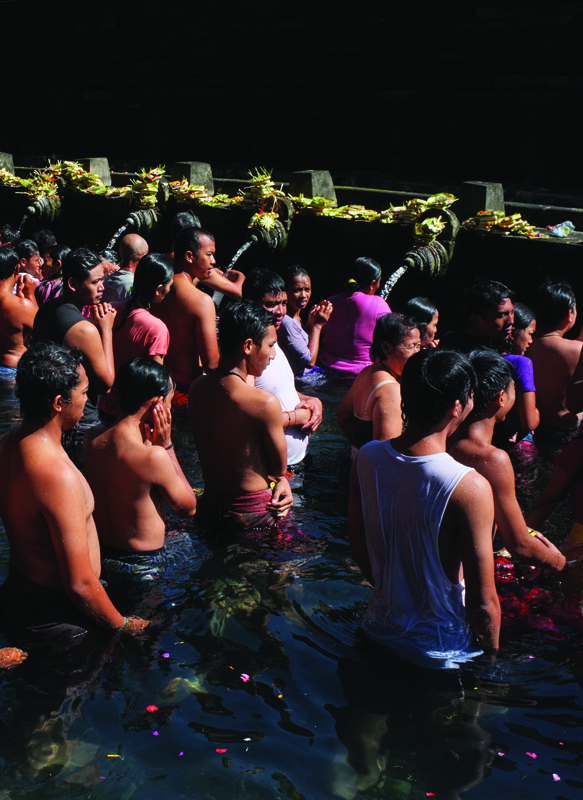
Springs already hold a profound divine connotation in Javanese culture and thus, are an integral part of ablution for the Holy Month. The act is said to have come about by a practice spread by Wali Songo, a group of well-regarded priests who were the first missionaries to transfer Islamic teachings throughout Java. The tradition was always observed one day before Ramadan in the pools at mosques or in the spring wells designated by the palace, but now people may cleanse themselves in the comfort of their homes as they prepare for Ramadan.
Nyekar
The practice of religion in Indonesia is usually mixed with old traditions, cultivating unique practices and rituals for the citizens. Such is the pre-Ramadan tradition of nyekar. This word comes from the root word sekar, which means flowers, and the verb nyekar meaning to spread flower petals (on a burial ground). This is an act of paying respect to the departed members of the family. According to early Javanese beliefs, the month of Ramadan marks the start of a new life cycle and the completion of the previous one, therefore you must give your respects to the lives that are no longer with us. People get together to pray at, clean and visit graves usually a week before Ramadan begins.
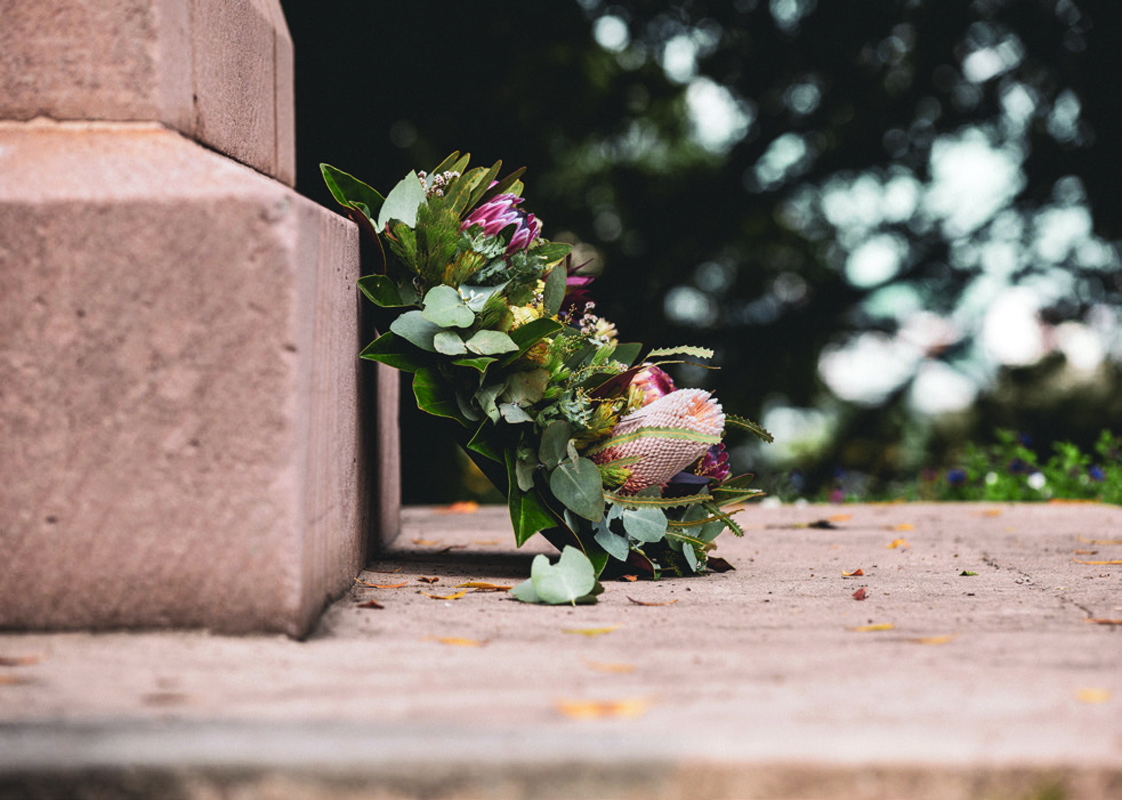
It is customary to decorate the graves with pleasant smelling flowers and is deemed disrespectful if non-fragrant flowers are used. Although there is no hard rule against them, as we learn from Putri Hapsari. She says: “Some people think non-fragrant ‘wild’ flowers are worthless and using worthless flowers is disrespectful to the dead. However, for those who cannot afford anything else, wildflowers are better than none.”

This small tradition is just another way families gather to pay tribute to their loved ones once a year, it’s a moment of joy when they come together to talk about the departed and offer stories of their lives. This beautiful tradition allows families to move on to the next chapter in their lives.
Games of Mheibes
We love how Ramadan has the power to bring people together. Even though we abstain from worldly affairs and practice self-restraint, this somehow brings the Muslim community closer than at any other time of the year. We thrive on our connection with our religion and culture through food, prayers and, in Iraq, it includes a game of mheibes. This game is also known as the game of the ring.

Although simple in terms of its rules and methods, it brings about quite an uproar from the crowds playing it. It is traditionally played early in the night, just after the breaking of fast, between two groups of 40 to 250 men, who all take turns to conceal a mihbes, or a ring. Yes, that’s a lot of people, but that’s what the magic of Ramadan does, it brings people together. This game of deception begins with one team leader clasping the ring in his hand under a cloth and hovering over the hands of his team members. The other members sit straight without any facial or body movements, as the leader carefully and swiftly places the ring in one of their hands in secret under the cloth.
To win the game, the opposing team needs to guess which person the ring falls with, out of the dozens of men, through body language alone. A simple game of deceit, yet so enthralling that it has been passed down for generations. And though the exact roots of the game are unknown, it has profound cultural and historical value. So much so that decades ago the Iraqi government itself would organise community-wide games, hosting large groups of people from across the country. Although this state-sponsored practice was halted during the unrest in the country, mheibes has made a return in recent years, as individual community members continue to pass forward the tradition and reminiscence of the good old days.

Such game nights are also custom to many other countries celebrating Ramadan around the world. As families gather to break their fasts, they indulge in some family-friendly fun. Such an example is the game of Ludo in South Asia, a board game played between four people in hopes to get their pawns home on the board before their opponents. Another such pastime that’s apparent in most households in Ramadan in the Gulf, as well as South Asia, is Carrom, another game for all ages. It’s interesting to see how even the youth are attracted to such old games, and how this month helps revive old traditions that are otherwise lost during the rest of the year. ✤

















